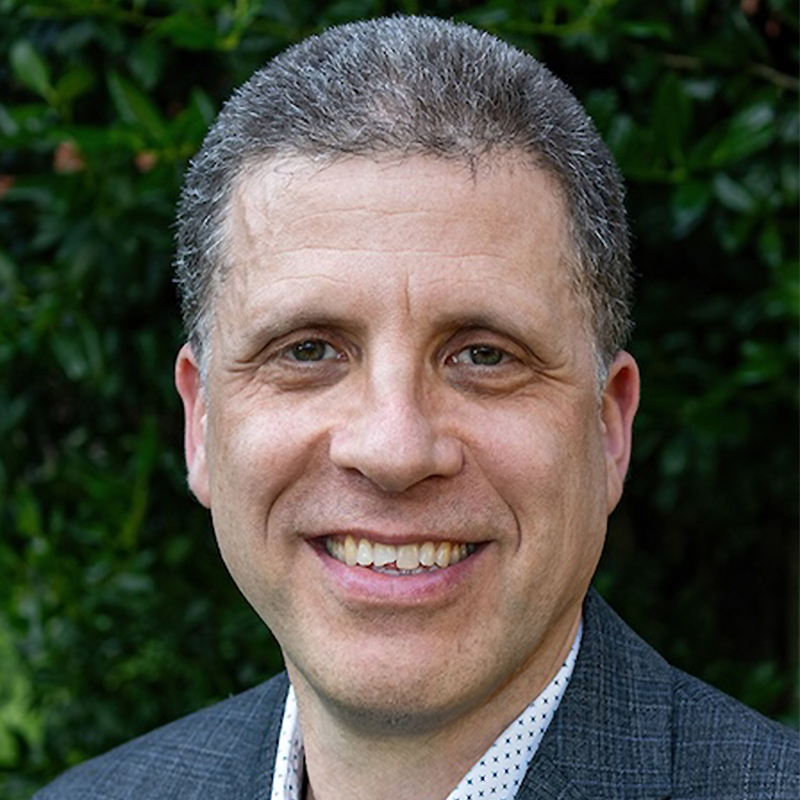News Story
UMD Staff Are the Students in a “Cool” New CEEE-Led Training

Facilities management professionals get an up-close look at the inner workings of an air-conditioning unit. Senior Faculty Specialist Jan Muehlbauer explains the system's mechanics.
CEEE Director Reinhard Radermacher gathered his students around an exposed air-conditioner unit that had been wheeled into a University of Maryland classroom for a lesson on the vapor compression cycle. With the equipment’s inner workings visible, the mechanical engineering professor pointed out the condenser, compressor, evaporator and other parts, and explained how they work together. Senior Faculty Specialist Jan Muehlbauer assisted with the air-conditioning demo, explaining the mechanics further.
But Radermacher and Muehlbauer weren't teaching an introductory lesson for engineering undergraduates. This group was entirely composed of University of Maryland Facilities Management professionals responsible for overseeing the planning, design, installation and repair of air conditioning systems.
The new two-session training was designed to help Facilities Management in its mission of keeping classrooms, dorms and other university facilities cool and comfortable, even on Maryland’s muggiest days. More than 50 facilities management professionals from the University of Maryland System attended the training this spring, some joining in person and others participating virtually. Project managers and facilities directors responsible for construction and renovation projects were exposed to engineering concepts relevant to their jobs, including the newest cooling technologies and the latest approaches to sustainability in air conditioning.
“It’s a big task to keep the buildings on campus operational,” Radermacher says, with more than 350 buildings associated with the College Park campus alone. “Facilities Management deals on a daily basis with systems that may not work properly and need to be repaired as well as with commissioning heating, ventilation and air conditioning (HVAC) systems for new buildings. It’s helpful for them to have a better understanding of the fundamentals behind air conditioning.”
While facilities management staff are experienced at overseeing building projects, they don’t necessarily have expertise in the mechanics of air conditioning. “The goal was to help our project management staff understand the basics of HVAC systems,” says Dan Pierce, associate director of University of Maryland Facilities Management, “so that they can be better prepared to participate in the design phase of the projects and so that they’ll be in a better position during construction and installation.”
In the past, the university sent facilities staff to the University of Wisconsin–Madison for HVAC professional development, but this year they turned to resident experts at the University of Maryland Center for Environmental Energy Engineering, a leader in the R&D of efficient, eco-friendly HVAC technologies. The on-campus training was also economical, because it allowed the facilities team to cut out costly travel expenses. “We have the capabilities right here on campus, so the thinking was why don't we go to our home staff?” says Pierce, who describes the training as “totally successful.”
“The thing we struggle with most in the building process is HVAC. A lot of other aspects of a building or renovation are similar from site to site. Drywall is drywall, and paint is paint. But HVAC is so nuanced.”
Luke Chenevert, University of Maryland assistant director for construction quality assurance
Radermacher opened the training by asking attendees, “What is air conditioning?” He posited that it is much more than just a system of machinery. “In my mind, it is creating comfortable and healthy indoor air. . . . And I could argue that we do all this for people to be productive,” he said. “The highest cost of operating a building is the salaries of the people working there. And whatever we do in terms of air conditioning, really we do for people to be productive.”
The CEEE director also stressed the importance of maintaining healthy indoor air quality and comfortable humidity levels, and discussed the scientific underpinnings of how to control those factors. He wrapped up the training with guidance on modern cooling methods, including chilled beams, an environmentally friendly but challenging technique, in which surfaces such as ceiling beams filled with cool water help control the room temperature. The energy-efficient technology is used in some of the university’s newer buildings, including the A. James Clark Hall. The caveat is that if the water temperature is too cold, it could lead to condensation raining down in the building and ensuing mildew.
“The training will definitely help me with my job,” says Chris Tenneson, senior project manager for planning and construction, who is overseeing the renovation of Cole Field House into a space for five cultural centers. “Due to the wide range of setup preferences, operating conditions, installation procedures, etc. that we deal with on our projects, HVAC systems are one of the most widely discussed elements on construction projects.” Having a deeper understanding “will allow us to deal with issues faster and more efficiently.”
Luke Chenevert, assistant director for construction quality assurance, also came away from the training with a more advanced understanding of HVAC. “The thing we struggle with most in the building process is HVAC,” says Chenevert, whose team is the university’s onsite construction representative. “A lot of other aspects of a building or renovation are similar from site to site. Drywall is drywall, and paint is paint,” he says. “But HVAC is so nuanced.”
While all the intricacies and challenges of HVAC systems can’t be addressed in a few hours, CEEE’s training offered an overview and an opportunity to address pressing issues, with Radermacher taking questions on concerns. “The attitude in the classroom was one of much higher interest than in a typical class,” says Radermacher, “because these professionals have an immediate need for the information.”
The lessons learned are sure to help guide Facilities Management in its work, says Chenevert. “In the end,” he says, “we are all really here to create a comfortable learning environment that empowers our students to reach their full potential, and a well-functioning HVAC system is at the forefront of this effort.”
Published May 17, 2024















